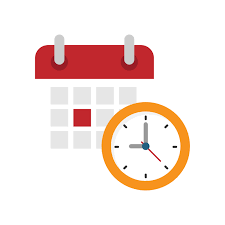About Calendar
A calendar is a system of organizing time that is used to measure and track the passing of days, weeks, months, and years. The most commonly used calendar in the world today is the Gregorian calendar, which is a solar calendar that was first introduced by Pope Gregory XIII in 1582.
The Gregorian calendar is based on the length of a tropical year, which is the time it takes for the Earth to complete one orbit around the Sun. This is approximately 365.2425 days long, which is why the Gregorian calendar has 365 days in most years, and 366 days in leap years.In the Gregorian calendar, each year is divided into 12 months, each of which has a varying number of days.

The months are:
January (31 days)
February (28 days, or 29 days in leap years)
March (31 days)
April (30 days)
May (31 days)
June (30 days)
July (31 days)
August (31 days)
September (30 days)
October (31 days)
November (30 days)
December (31 days)
The days of the week in the Gregorian calendar are Sunday, Monday, Tuesday, Wednesday, Thursday, Friday, and Saturday.
There are other calendars used throughout the world, many of which are based on different astronomical events, such as the phases of the Moon or the movement of the stars. For example, the Islamic calendar is a lunar calendar, which is based on the cycles of the Moon. The Jewish calendar is a lunisolar calendar, which is based on both the cycles of the Moon and the seasons.
Calendars have been used by humans for thousands of years, and they have been an important tool for organizing time and for cultural and religious practices. Today, calendars are used for a wide range of purposes, from scheduling appointments and events to planning holidays and observances.
The origins of the modern calendar can be traced back to the ancient Egyptians, who used a solar calendar with 365 days. However, this calendar did not account for leap years, so it eventually fell out of sync with the seasons. Other ancient civilizations, such as the Romans and Greeks, also used various types of calendars.
The Julian calendar
which preceded the Gregorian calendar, was introduced by Julius Caesar in 45 BCE. It had 365 days in a year, with an extra day added to February every four years to account for leap years. However, the length of a tropical year is slightly less than 365.25 days, so the Julian calendar still drifted out of sync with the seasons over time.
The Gregorian calendar
The Gregorian calendar was introduced to fix the problem of the Julian calendar’s inaccuracy. It omitted leap years in years that are divisible by 100 but not by 400, which makes the calendar more accurate than the Julian calendar. The Gregorian calendar was gradually adopted by different countries over several centuries, and today it is used as the standard calendar in most of the world.
In addition to the Gregorian calendar
There are many other calendars used in different parts of the world. For example, the Chinese calendar is a lunisolar calendar, which is based on both the cycles of the Moon and the position of the Sun
